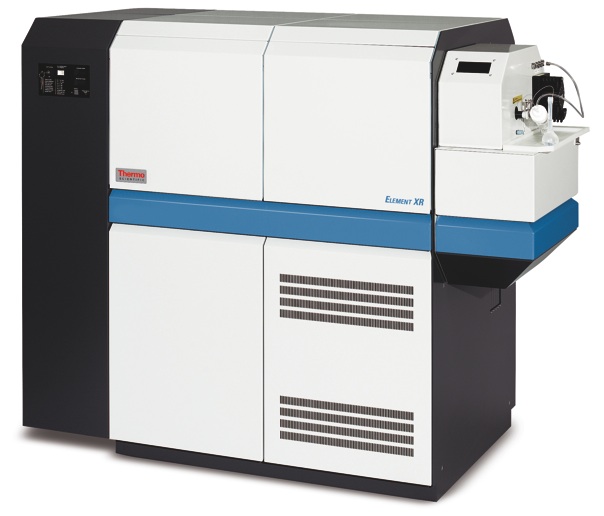ICP-MS Facility
BASICS | CALENDAR | CONTACT | INSTRUMENTS & CAPABILITIES
PUBLICATIONS | SAMPLE PREPARATION | SERVICE RATES & POLICIES
The University of Mississippi ICP-MS Facility is a multi-user open access laboratory committed to precise and accurate determinations of trace element and isotope ratios in environmental, biological, geological, and other materials. Our goal, to provide researchers across the Mid-South access to state-of-the-art instrumentation and high-quality elemental analytical data, is aimed at stimulating research collaborations across the region. We promote use by a diverse group of scientists and encourage you to contact us or visit us for a tour so that we may help you with your research needs. The Facility is located in Coulter Hall, Room 128A, in the Department of Chemistry and Biochemistry.
Inductively Coupled Plasma Mass Spectrometry (ICP-MS)
ICP-MS the premier method for determining trace elements and isotopes in a wide-variety of environmental and biological samples because of its low detection limits, high sensitivity, wide linear dynamic range, and ability to measure about 80% of the periodic table. Our facility is equipped with two state-of-the-art ICP-MS instruments both from Thermo Fisher: the Element-XR and the X-Series 2. The Element-XR utilizes a double-focusing (magnetic-electric) mass analyzer and is the technology of choice for ultra-trace elemental analysis because it offers the highest sensitivity and lowest detection limits of any ICP-MS. Moreover, it has the unique ability to resolve most isobaric interferences through high mass resolution. Our instrument is equipped with an extended range detector system combining a SEM and a single faraday detector to extend the linear dynamic range to over 1012 orders of magnitude. The X-Series 2, a fast-scanning quadrupole instrument with patented collision cell technology, is utilized for routine analyses and coupled to chromatography instruments for elemental speciation measurements. In addition, a laser ablation solid sample introduction system (UP213 from New Wave Inc.), which can be coupled to either instrument, allows spatial analyses down to a few microns. Additional information can be found on the via the Instruments and Capabilities link.
